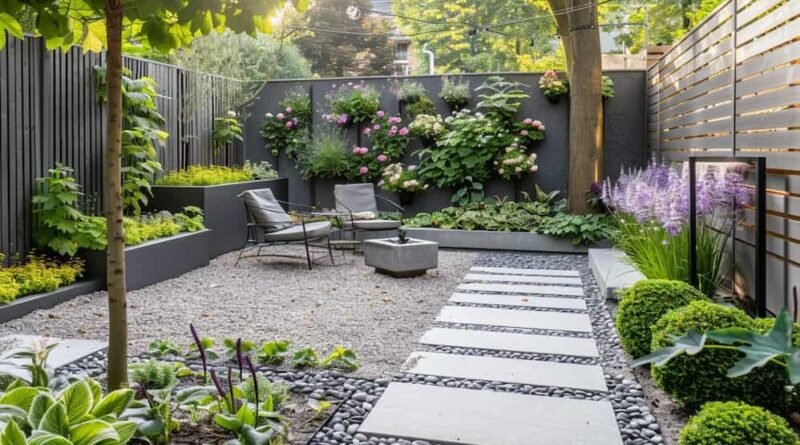5 Common Garden Design Mistakes to Avoid
Designing a garden can be one of the most rewarding experiences for any homeowner. With the right layout, plants, and structure, your garden can transform into a peaceful retreat. However, a successful garden design requires more than just planting a few flowers and adding a pathway. Many people, especially beginners, make common mistakes that can hinder the growth and overall appearance of their garden. Here, we’ll discuss five garden design mistakes to avoid to ensure your garden looks beautiful and thrives year-round.
1. Ignoring the Importance of Planning
The most frequent mistake people make in garden design is not creating a proper plan. Starting without a plan can lead to inconsistent planting and wasted space, resulting in a less cohesive look.
- Assess Your Space: Before planting, evaluate the size, sunlight, and drainage of your garden. Each plant has specific needs, and planning helps you choose the right plants for each area.
- Draw a Layout: Sketch a rough design that includes paths, plant beds, and focal points. This layout acts as a blueprint, guiding you through each step and helping to avoid random placements.
Taking time to plan will help you save money, time, and effort by ensuring that your plants and garden features fit together harmoniously.
2. Overloading the Garden with Too Many Plants
It can be tempting to fill every corner with plants, but overcrowding is one of the most common garden design mistakes. Overloading your garden can limit growth, as plants have to compete for sunlight, water, and nutrients.
- Choose Quality Over Quantity: Select a few plants that suit your climate and match your design aesthetic rather than purchasing a large variety.
- Provide Room to Grow: Consider the mature size of plants. While they may look small initially, they need enough room to grow without competing with neighboring plants.
A cluttered garden can quickly turn into a maintenance headache, while a well-spaced garden encourages healthy plant growth and provides visual appeal.
3. Neglecting the Hardscape Elements
A beautiful garden isn’t just about the plants; hardscape elements like pathways, borders, and furniture are essential components of effective garden design. Focusing only on greenery without adding structure can leave your garden looking unfinished.
- Add Paths and Borders: Pathways prevent people from trampling on plants, and borders create a defined edge, giving the garden a polished look.
- Incorporate Seating and Decorations: Benches, fountains, and statues add personality and functionality to your garden, allowing you to enjoy the space in comfort.
Balancing greenery with hardscaping elements can make your garden more inviting and well-rounded.
4. Choosing Plants Without Considering the Climate
One common garden design pitfall is selecting plants that aren’t suited to your climate or soil type. Not all plants thrive in all conditions, and planting species that need special care can lead to disappointment if they don’t adapt to the environment.
- Research Native Plants: Native plants are adapted to your area’s soil, temperature, and moisture conditions, making them easier to care for.
- Account for Sunlight and Shade: Place plants according to their sunlight needs. Sun-loving plants should be positioned in well-lit areas, while shade-loving varieties thrive in cooler, shaded spots.
Selecting climate-appropriate plants helps ensure your garden is low-maintenance and sustainable, allowing you to enjoy a thriving landscape with minimal effort.
5. Forgetting About Seasonal Changes
A garden that looks great in one season but barren in others is a common design mistake. A well-thought-out garden design should consider how the garden will look year-round.
- Incorporate Evergreen Plants: Evergreens provide color and texture even in winter, keeping your garden from looking empty during colder months.
- Plan for Bloom Cycles: Choose a mix of plants that bloom in different seasons. This way, you’ll have flowers, greenery, or interesting foliage throughout the year.
With seasonal planning, your garden will stay vibrant in every season, creating a dynamic, ever-changing landscape.
Conclusion
Designing a garden involves more than just planting flowers—it requires careful thought and planning. By avoiding these common garden design mistakes, you can create a balanced, beautiful, and functional outdoor space. Remember to plan your layout, avoid overcrowding, incorporate hardscape elements, select climate-suited plants, and consider the seasons.
For more gardening tips and ideas, visit Gardens Nursery. You’ll find a wealth of information on landscaping, lawn care, and everything you need to make your garden flourish.
